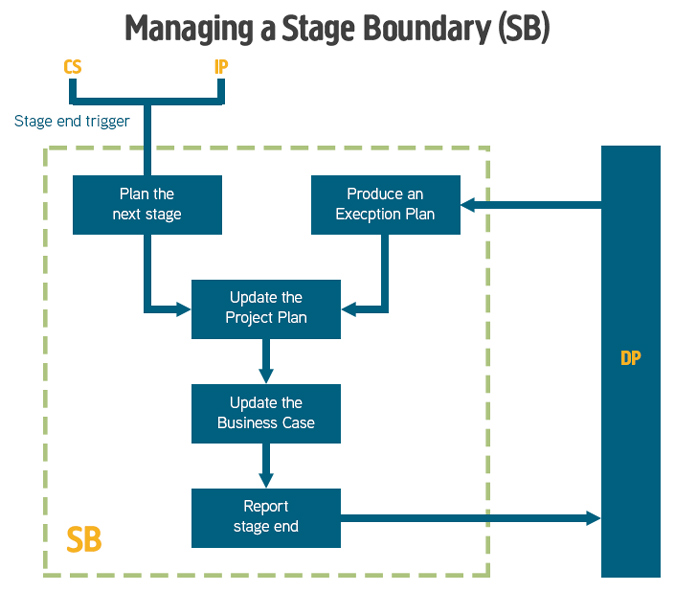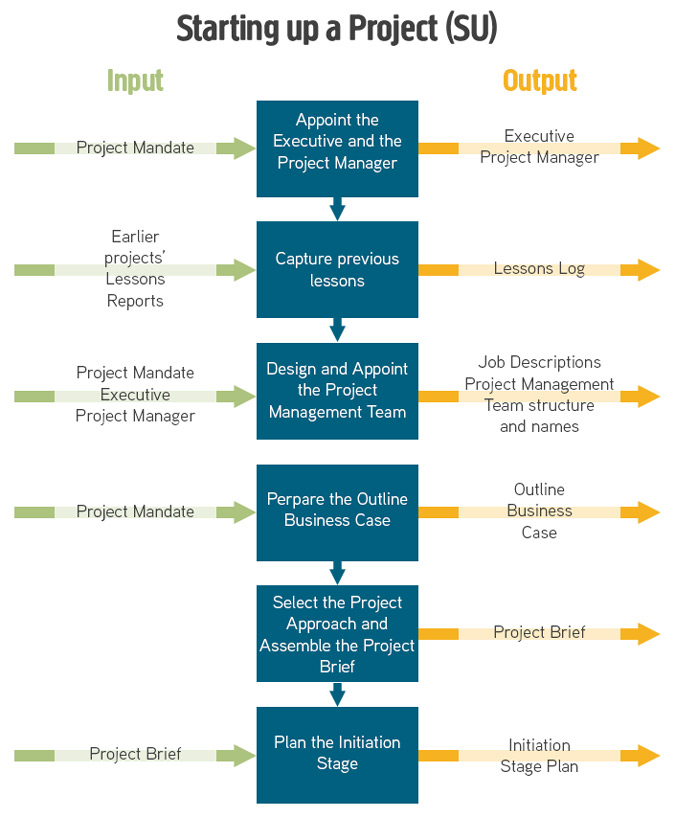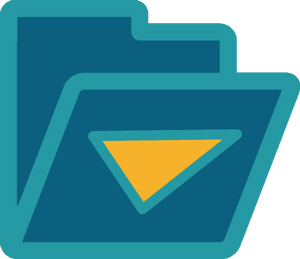PRINCE2® PROCESSES - Managing a Stage Boundary

The purpose of the Managing a Stage Boundary process is to enable the Project Board to be provided with sufficient information by the Project Manager so that it can review the success of the current stage, approve the next Stage Plan, review the updated Project Plan, and confirm continued business justification and acceptability of the risks. Therefore, the process should be executed at, or close to the end of, each management stage. The PRINCE2 Processes are covered in detail on our PRINCE2 Foundation training and PRINCE2 Practitioner training courses.
The objective of the Managing a Stage Boundary process is to:
- Assure the Project Board that all products in the Stage Plan for the current stage have been completed and approved
- Prepare the Stage Plan for the next stage
- Review and, if necessary, update the Project Initiation Documentation (in particular the Business Case, Project Plan, project approach, strategies, project management team structure, and role descriptions)
- Provide the information needed for the Project Board to assess the continuing viability of the project – including the aggregated risk exposure
- Record any information or lessons that can help later stages of this project and/or other projects
- Request authorization to start the next stage.
The main products of this process are as follows:
- An End Stage Report produced by the Project Manager and given to the Project Board, outlining information on the current stage achievements.
- Current Stage Plan actuals showing the performance against the original Stage Plan.
- The Next Stage or Exception Plan for approval.
- Project Initiation Documentation may require updating.
- A revised Project Plan incorporating all the actual metrics.
- An updated Risk register, together with the Updated Business Case and Project Plan, which is used by the Project Board to review that the Project has continuing ongoing viability.
- Configuration item records created/updated for new stage products.
- An updated Business Case.
- The Lessons Log.
- Any changes to the Project Management Team with updated Job Descriptions.
Team plans may also be produced when planning the next stage, defining the work packages that will be produced in the next stage.
Andy Trainer
12 Jul 2007
PRINCE2® PROCESSES – Controlling a Stage (CS)

The purpose of the Controlling a Stage process is to assign work to be done, monitor such work, deal with issues, report progress to the Project Board, and take corrective actions to ensure that the stage remains within tolerance.
For each stage, the following cycle of activities will be covered:
- Authorise a Work Package
- Review Work Package Status
- Receive Completed Work Packages
- Review the stage status
- Report highlights
- Capture and examine issues and risks
- Escalate issues and risks
- Take correction action
The continued assessment of risk and issues during this process is important.
Products used or produced during this process:
- Work packages, detailing the products to be produced must be agreed between Project and Team Manager.
- Quality register – checked for approved products produced
- Configuration item records – updated with the latest status of products
- Checkpoint reports – reviewed in preparation for Highlight reports
- Highlight Reports (time-driven control) produced by the Project Manager, sent to the Project Board advising on progress information.
- Issue reports and Issues register in which all issues are captured and examined.
- Daily log – used to informally manage any risks and issues
- Lessons Log – updated with any lessons learned during the stage
- Updated Risk register.
- The Stage Plan which is regularly updated with actual achievements.
- An Exception Report may also need to be created if an issue is forecast to exceed stage tolerances.
Learn more about the Controlling a Stage Process on our PRINCE2 Courses.
Andy Trainer
12 Jul 2007
PRINCE2® PROCESSES – Starting Up a Project (SU)

The purpose of the Starting up a Project process is to ensure that the prerequisites for Initiating a Project are in place by answering the question: do we have a viable and worthwhile project?
This process is triggered by a mandate and is designed to establish the following:
- There is a business justification for initiating the project (documented in an outline Business Case)
- All the necessary authorities exist for initiating the project
- Sufficient information is available to define and confirm the scope of the project (in the form of a Project Brief)
- The various ways the project can be delivered are evaluated and a project approach selected
- Individuals are appointed who will undertake the work required in project initiation and/or will take significant project management roles in the project
- The work required for project initiation is planned (documented in a Stage Plan)
- Time is not wasted initiating a project based on unsound assumptions regarding the project’s scope, time scales, acceptance criteria, and constraints.
Products produced during this process are as follows:
- Role descriptions
- Daily Log
- Lessons Log
- Outline Business Case
- Project Product Description
- Project Approach
- Project Brief
- Stage Plan
The PRINCE2 processes are covered in detail in our PRINCE2 Foundation training and PRINCE2 Practitioner training courses in Brighton, Sussex.
Andy Trainer
12 Jul 2007
If you've attended our PRINCE2® Foundation or PRINCE2 Practitioner course and want to start a project using PRINCE2 back at work, you'll need somewhere to start.
Here you can download official PRINCE2 project templates to help you to manage your project effectively.
You can download a zipped folder containing all of the PRINCE2 project templates or select individual templates from the list below:

PRINCE2 Project Templates:
- Benefits Review Plan
- Business Case
- Checkpoint Report
- Communication Management Strategy
- Configuration Item Record
- Configuration Management Strategy
- Daily Log
- End Project Report
- End Stage Report
- Exception Report
- Highlight Report
- Issue Register
- Issue Report
- Lessons Log
- Lessons Report
- Project Plan
- Product Description
- Product Status Account
- Project Brief
- Project Initiation Documentation
- Project Product Description
- Quality Management Strategy
- Quality Register
- Risk Management Strategy
- Risk Register
- Work Package
Andy Trainer
18 Nov 2009